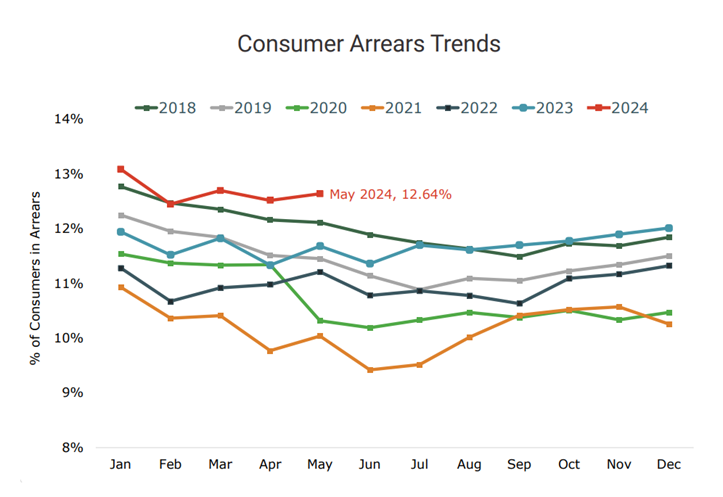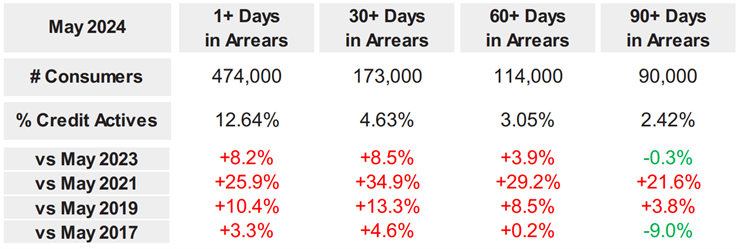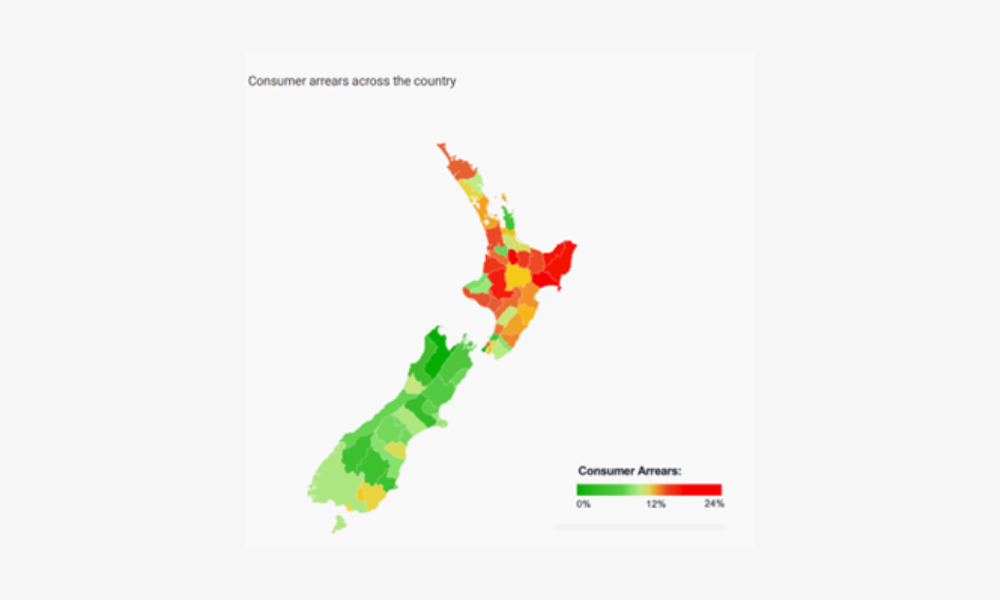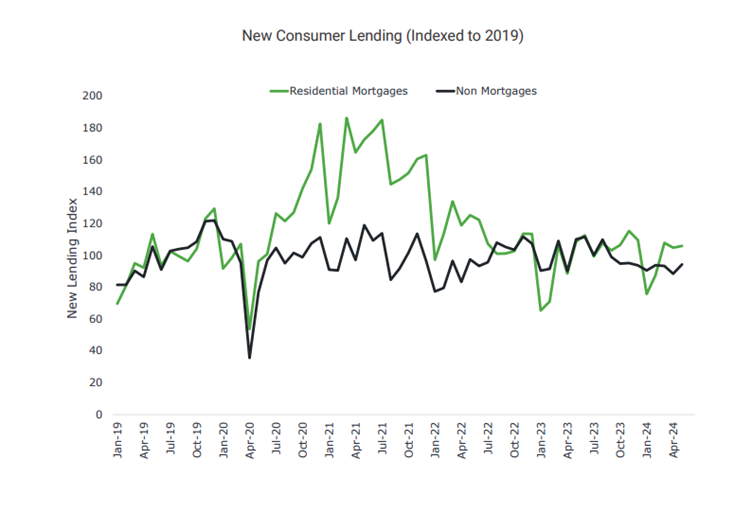Consumer arrears rise, business liquidations jump

More consumers are falling behind on payments as arrears tracked 8.2% higher year-on-year for the month of June, according to the latest Centrix credit indicator report, as the cost-of-living crisis bites the bank balances of Kiwis nationwide.
The figures come despite the latest GDP figures showing a small return to growth following two quarters of technical recession.
However, many commentators believe the small growth was unlikely to make any tangible difference for Kiwi households, according to Centrix managing director Keith McLaughlin (pictured above).
“The challenging economic climate continues to persist,” McLaughlin said. “For example, we saw consumer arrears climb last month – largely driven by telco and mortgage repayments – as pressure from the cost-of-living crisis endures.
“There’s plenty of uncertainty about the future, with many anticipating the challenging conditions to persist well into 2025.”

Consumer arrears up, felt differently across New Zealand
The number of consumers reported in arrears in May rose to 12.64% of the credit active population (up from 12.52% in the month prior), which translates to 474,000 people behind on payments (compared to 458,000 in April).
Of these, 173,000 consumers are currently 30 or more days past due, and 114,000 are at 60 or more days in arrears. Encouragingly, the number of people with non-performing loans (90 or more days behind on their payments) has fallen to 90,000, unchanged year-on-year.
While the cost-of-living crisis has hit the whole of New Zealand, some have felt the impact more than others.
Districts across the central North Island such as Wairoa (18.33%), Kawerau (17.78%), and South Waikato (17.06%) were hardest hit with double the level of arrears than that of the least affected districts like Nelson City (9.16%), Tasman District (9.42%), and Wellington (9.77%).

Mortgage arrears and mortgage lending
Despite rising mortgage arrears, new lending seems to be keeping pace, reflecting pent-up demand in the housing market.
Mortgage arrears rose slightly in May, with 22,000 home loans now past due – up 12% year-on-year and a return to 2019 pre-pandemic levels.
There are also currently 13,150 accounts reported in financial hardship, up 25% year-on-year. This figure has been rising since November 2022 as the cost-of-living crisis continues to bite Kiwi households.
Mortgage repayment difficulties make up almost half of these hardships (44%), alongside credit card debt (29%) and personal loan repayments (19%). The highest rate of financial hardship is seen for those aged between 35 and 39 years old.
On the other hand, vehicle loan arrears dropped to 5.5% in May (compared to 5.7% in 2023), while credit card arrears fell to 4.7% in May and remain below historical levels.
New residential mortgage lending for the May quarter was 4.9% higher than the same period last year – but still 39% lower than the same period in 2021 during the property market boom.
McLaughlin said this “could be a signal the housing market is starting to warm up as average values decline, and buyers begin to take advantage of the conditions”.
Furthermore, non-mortgage new lending (credit cards, vehicle/personal loans, BNPL and overdrafts) is down 10.7% year-on-year, impacted significantly by the lower volume of new car sales compared to 2023.
Overall, new household lending is 3.3% higher on a year-on-year basis.

Business liquidations rise
On the business side, company defaults and liquidations rose in May, with 233 companies placed in liquidation – the highest May figure recorded since 2014, according to Centrix.
Year-on-year, all sectors have seen liquidations rise with retail trade companies experiencing the largest increase annually followed by the property/rental and transportation sectors.
“While we’ve observed an increase in liquidations across the country, there’s been a significant increase in the rate of South Island companies going into liquidation over the first quarter of 2024 when compared to the same period last in 2023,” said McLaughlin.
Over the first quarter of 2024, there were 94 company liquidations in the South Island – up 47% year-on-year and largely driven by the Canterbury region.
There were 259 liquidations in Auckland over the same period (+38% year-on-year) and 137 liquidations across the rest of the North Island (+10% year-on-year).
“Business credit defaults have also risen year-on-year, which further points to the overarching economic tension being experienced across the country as weaker consumer demand flows through to impacting businesses,” McLaughlin said.
“For anyone who is feeling the pinch, it’s important to seek advice early to help get through without impacting their future financial wellbeing.”



